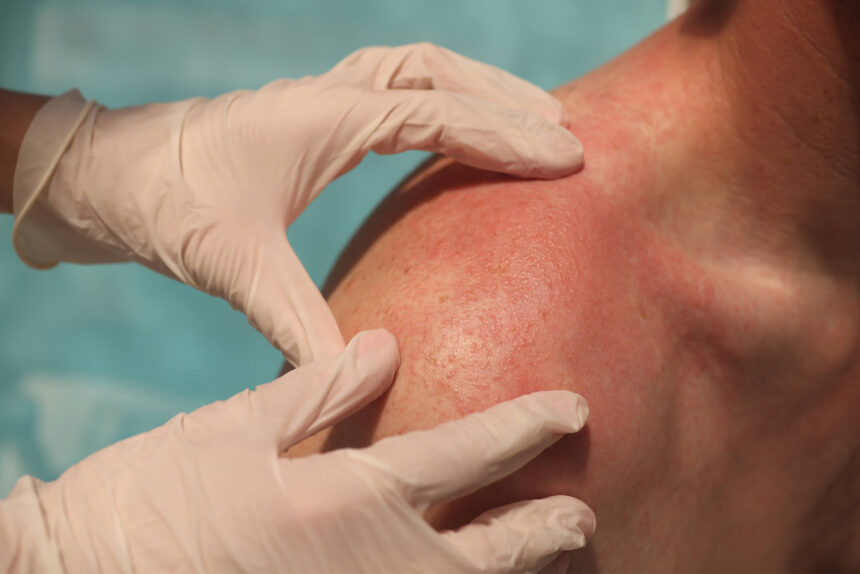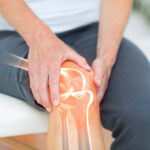In an era where beauty and health are often judged by external appearances, it’s easy to overlook subtle changes in our skin that could be sounding silent alarms. Skin cancer, one of the most common types of cancer globally, often begins as a seemingly harmless mark on the skin, easily dismissed or ignored. Yet, early detection is crucial and can mean the difference between a simple treatment and a life-threatening condition. Over 5 million cases of skin cancer are diagnosed each year in the United States alone, highlighting the need for increased awareness of its early signs. This article aims to shed light on 13 commonly overlooked symptoms of skin cancer. We’ll take a deep dive into each symptom, exploring what they look like, when to be concerned, and why regular self-examinations are a critical part of your health routine.
Skin cancer can be devious, masquerading as harmless blemishes or slight changes in the skin that many might attribute to aging, sunburn, or benign skin issues. However, these changes, when ignored, can evolve into serious health problems. By understanding and keeping an eye out for these 13 symptoms, you can take charge of your skin health and seek timely medical attention.
Understanding the Symptoms
1. Unusual Moles or Growth
Look for moles that have an asymmetrical shape, irregular borders, multiple colors, a diameter larger than a pencil eraser, or change in size, shape, or color. Any mole or growth that looks different from others on your body (the “ugly duckling” sign) should raise concern.
2. Persistent Sores
Sores that don’t heal within a few weeks, particularly those that bleed, ooze, or crust over, can be an early sign of skin cancer.
3. Rough or Scaly Patches
Areas of skin that feel rough or scaly to the touch, particularly on sun-exposed areas like the face, ears, and hands, can be indicative of actinic keratosis, a potential precursor to skin cancer.
4. Itchy or Painful Lesions
Skin cancer spots can be itchy or painful. Pay attention to persistent itchiness or pain in spots on your skin.
5. Changes in Pigmentation
Unusual changes in skin coloration, such as darkened patches or spots, could be a sign of melanoma or other types of skin cancer.
6. Shiny Bumps or Nodules
Look for shiny, translucent, or pearly bumps. These could be basal cell carcinomas, especially when they appear on the face or neck.
7. Red or White Patches
Persistent red or white patches, especially in areas that get a lot of sun exposure, can be a warning sign.
8. Tender or Bleeding Lesions
Lesions that bleed easily or remain tender over time need immediate attention.
9. Changes in Sensation
Any changes in sensation, such as tenderness or a prickling feeling in a mole or spot on the skin, should not be ignored.
10. Swollen Lymph Nodes
While swollen lymph nodes can be a sign of many different conditions, they can also indicate skin cancer, especially melanoma.
11. Dark Streaks Under Nails
Unexplained dark streaks under a fingernail or toenail, or a surrounding dark skin pigmentation, can be a sign of acral lentiginous melanoma, a form of skin cancer.
12. Waxy or Scar-Like Lesions
Look for lesions that appear waxy, scar-like, or without a clearly defined border, as these can be symptoms of certain types of skin cancer.
13. Visible Blood Vessels or Nerve Growth
Visible tiny blood vessels or growth of nerves within a skin lesion can be a sign of more advanced types of skin cancer.
The Importance of Regular Self-Examinations
Regular self-examinations are crucial in the early detection of skin cancer. By familiarizing yourself with your skin and monitoring for changes, you can catch potential issues early when they are most treatable. Self-exams should be done once a month in a well-lit room with a full-length mirror and a hand-held mirror for hard-to-see areas.
When to Contact a Dermatologist
- Any Suspicious Changes: If you notice any changes in existing moles or new symptoms, it’s time to consult a dermatologist.
- Regular Check-Ups: Even if you don’t notice any specific symptoms, regular check-ups, especially if you have a history of sun exposure or skin cancer in your family, are recommended.
- Professional Skin Exams: Dermatologists can provide more thorough examinations and identify signs you might miss.
Steps to Take to Avoid Skin Cancer
Prevention is key in the fight against skin cancer. Here are some proactive steps you can take to protect your skin:
Avoid Excessive Sun Exposure
- Seek Shade: Especially between 10 a.m. and 4 p.m. when the sun’s rays are strongest.
- Wear Protective Clothing: Long-sleeved shirts, pants, wide-brimmed hats, and sunglasses can protect your skin from harmful UV rays.
Use Sunscreen Regularly
- Broad-Spectrum Sunscreen: Choose a sunscreen that provides protection against both UVA and UVB rays.
- SPF 30 or Higher: Apply sunscreen with at least SPF 30, even on cloudy days, and reapply every two hours, or after swimming or sweating.
Avoid Tanning Beds
- Skip Tanning Beds: Tanning beds emit harmful UV radiation that can increase the risk of skin cancer. Opt for sunless tanning products instead.
Be Aware of Your Environment
- Reflective Surfaces: Water, snow, and sand can reflect and intensify the sun’s harmful rays.
- Altitude: UV exposure is greater at higher altitudes.
Regular Skin Examinations
- Self-Exams: Conduct monthly self-examinations to check for any new or changing spots.
- Dermatologist Visits: Schedule regular visits with a dermatologist for a professional skin examination.
Protect Children
- Early Protection: Start sun protection early. Children are especially vulnerable to harmful UV rays.
Maintain a Healthy Diet
- Antioxidant-Rich Foods: A diet rich in antioxidants can help protect your skin. Include fruits, vegetables, nuts, and seeds in your diet.
- Stay Hydrated: Keeping your skin hydrated can help maintain its health and resilience.
Be Mindful of Medications
- Check Medications: Some medications can increase your sensitivity to the sun. Be aware and take extra precautions if needed.
Conclusion: Vigilance Is Key
The early detection of skin cancer can save lives, making it imperative to pay attention to even the smallest changes in your skin. Regular self-examinations and timely consultations with dermatologists are key components of early detection. Understanding and recognizing the 13 commonly ignored symptoms of skin cancer is the first step towards proactive skin health. Remember, when it comes to skin cancer, it’s always better to be safe than sorry. Stay vigilant, stay informed, and don’t hesitate to seek professional advice for the sake of your health.








